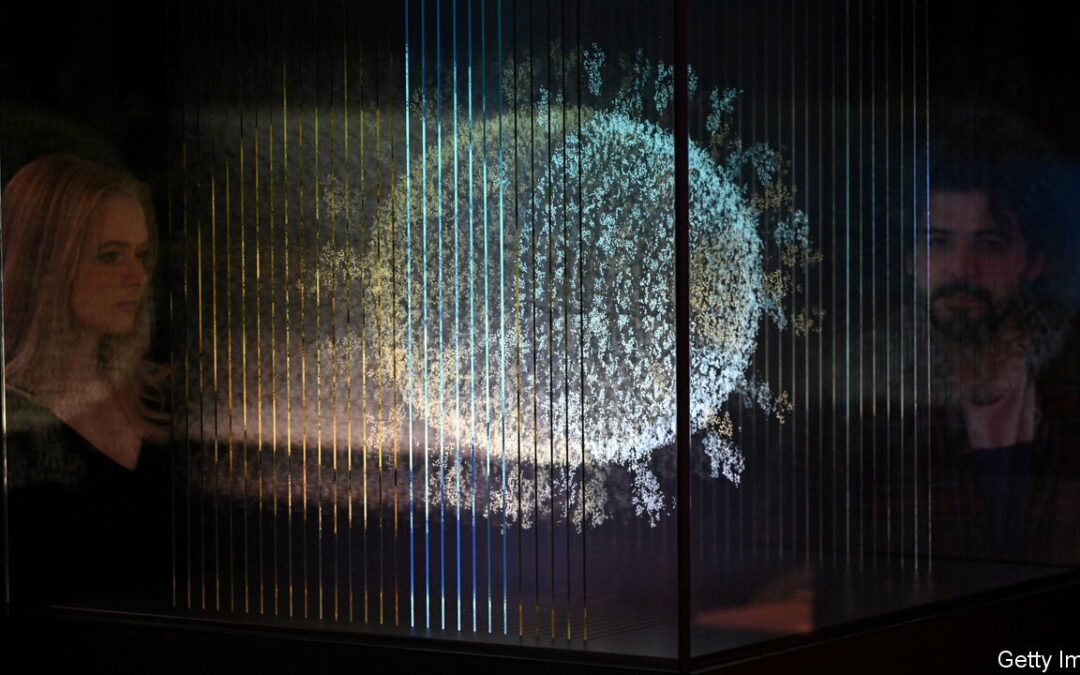IN THE THREE years since the covid-19 pandemic began, one of the most persistent questions has been how the virus that caused it—SARS-CoV2—first jumped from animals to humans. SARS-CoV2 is one of a group of viruses, known as coronaviruses, commonly found in bats. But bats are rarely found in Wuhan, the Chinese city in which the virus emerged in December 2019. So how did humans come to be infected? Two theories have emerged: the “zoonotic” hypothesis, whose proponents argue that the virus jumped from animals to humans at a market in Wuhan; and the “lab leak” theory, according to which the virus escaped from a laboratory in the city. Which is right?
The initial focal point of the covid outbreak in Wuhan appears to have been the Huanan Seafood Wholesale Market. At first it seemed likely that the virus had been transmitted from bats to humans via an “intermediate” animal that was infected outside the city and then sold at the market. This was how SARS first emerged 20 years ago. In 2021 researchers confirmed that live animals, as well as fish and meat, had been sold at the market in November 2019, when the first infections may have occurred. On March 20th a new report by an international group of scientists—based on analysis of the genetic sequences of samples taken from the market in January 2020 by Chinese researchers—confirmed the presence of animals such as raccoon dogs, weasels, foxes, hedgehogs, porcupines and bamboo rats. The raccoon dog, which can carry and transmit this virus, is of particular note. But there is no way of proving from the available data that these animals transmitted SARS-CoV2 to humans.
In the months after the outbreak a second theory emerged. Scientists at the Wuhan Institute of Virology, a global centre for coronavirus research, were working on the genetic engineering of these viruses. Some observers thought that workers handling infected research animals could have provided the virus with passage to the outside world. The Chinese government has denied that the virus came from one of the country’s laboratories.
China’s reluctance to divulge information has complicated the understanding of exactly what happened in the early days of the covid outbreak. The genetic sequences used in the recent report on animals at the market were placed on a public database only temporarily. (They may be re-released when a revised version of the paper is published.) An early pre-print suggested that the virus may have already reached humans and that the market accelerated its spread, rather than being the site of the initial infection.
Despite the new data, in a briefing on March 17th the World Health Organisation (WHO) said that both the zoonosis and lab-leak theories remained on the table. Maria Van Kerkhove, a WHO epidemiologist, did say that the data was an “additional clue” in the search for an intermediate host.
Not everyone is convinced. The FBI concluded some time ago that the pandemic was probably the result of a lab leak, saying it had “moderate confidence” in that assessment. In February America’s Department of Energy—which has expertise on biological threats—came to the same conclusion with “low confidence”. Other American agencies favour the zoonosis theory, or have been unable to decide. They may have access to information that scientists have not seen, but that imbalance should soon be addressed. On March 20th President Joe Biden signed a bill to declassify information on the origins of covid-19 held by intelligence agencies.
The need to identify the origin of the virus goes beyond the imperative to understand what caused the deaths of an estimated 20m people. If covid emerged from a laboratory, that would raise questions about the safety of its research practices. But if the virus was a zoonotic spillover in a market, scientists will need a better understanding of where and how these viruses emerge. That is precisely the sort of research that those labs in Wuhan conduct. ■









